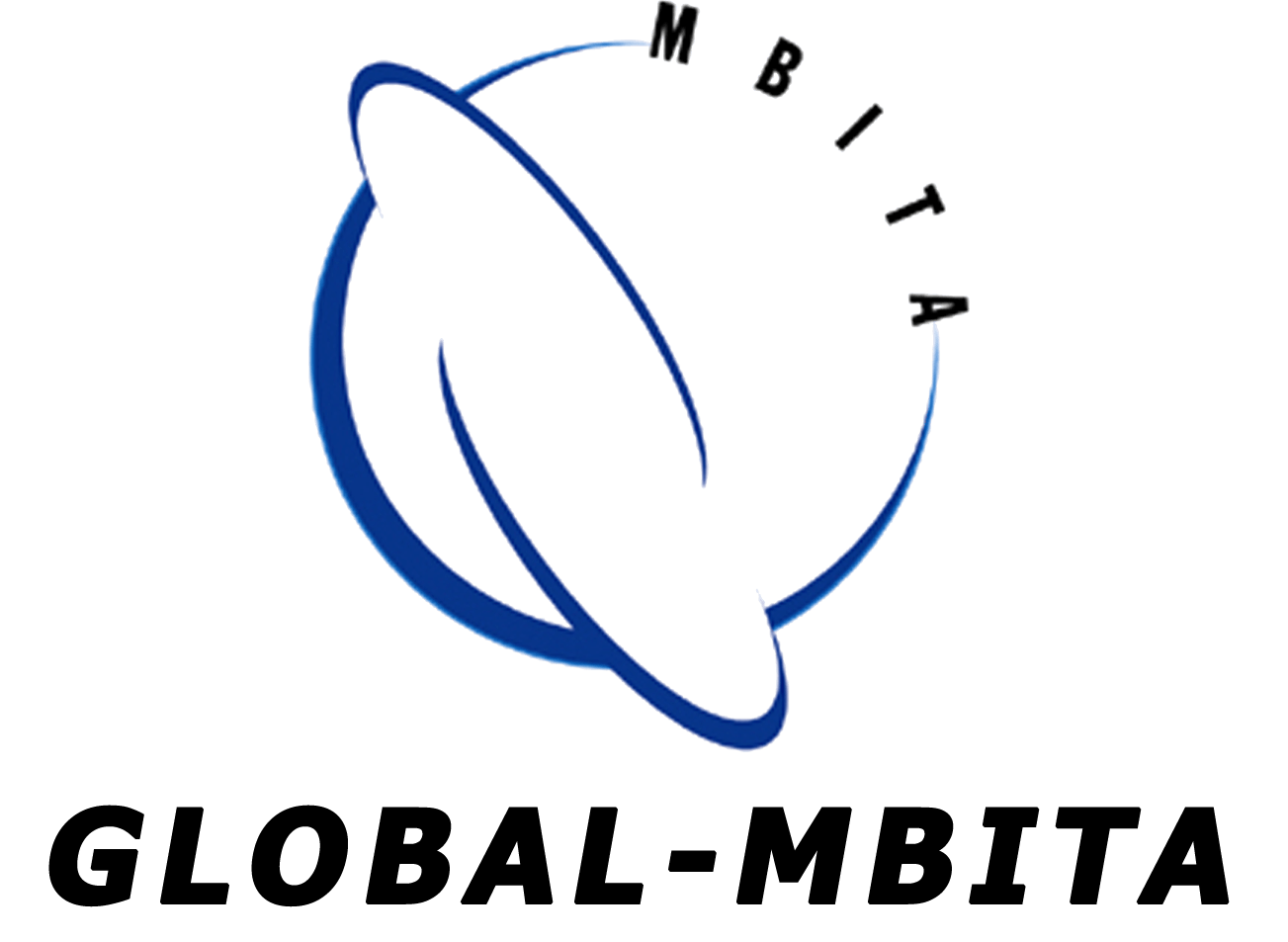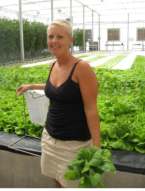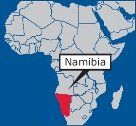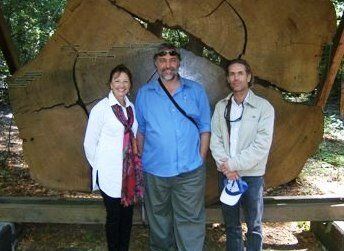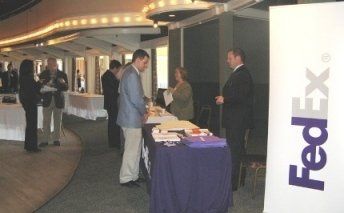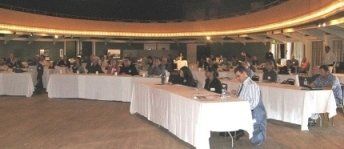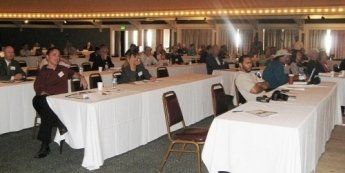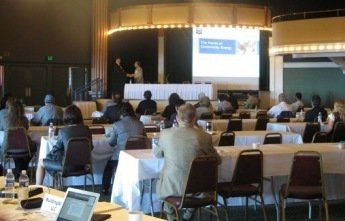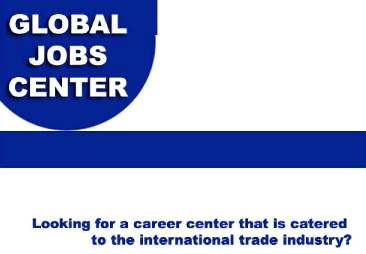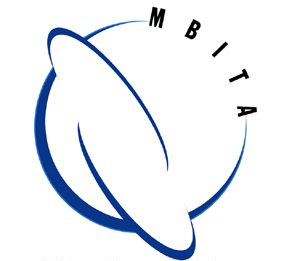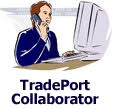UPDATE
As we near the end of a very busy year for MBITA our last conference for 2009 will be on ‘Smart Energy’. Please see a special article from one of the conference’s speakers in this issue.
Also, please read about the 2nd annual Green Trade Network conference that was a great success, and see all of the PP presentations that are online in the ‘events’ section of our website. If you want to purchase the audio files for this event please contact our office.
In addition, read about MBITA hosting a special delegation from Namibia as part of the Millennium Challenge Corporation (MCC) grant.
President
Tony Livoti
MBITA
Vice President
Shay Adams
AIM Medical Sales
Members
Dr. Edward Valeau
Els Group LLC
Hartnell College
President Emeritus
Marcelo Siero
IdeasSiero
Jim Faith
Trade Export
Finance Online
(TEFO)
Cristina Polesel
MBITA
General Manager
This newsletter has been
created by MBITA's editor
Cristina Polesel
cristina@mbita.org
MBITA New Member
Solsustech Inc. Introduces a New Style of Greenhouse Farming
This breakthrough technology in hydroponics creates an exceptionally good tasting and nutritious product for the local consumer, can be established in most any region in the world and produces more food in less space with less water and carbon emissions. The proprietary designs are especially well suited for extreme hot and dry climates.
The location for the pilot project was chosen purposefully with temp ranging well over 120 in the summer and dropping to the teens in the winter. Vicksburg Arizona, located on the edge of the Mohave desert, often battles with a scarcity of water which itself has a very high salt content not to mention , high winds and dust storms making growing conditions a challenge. With earlier experience in ebb and flow systems and a strong botany background the founder of Solsustech Inc. designed and built the first successful floating lettuce system to trump the extreme challenges of the desert.
Producing more than 40 head of lettuce/ft2/year the pond system is an economic success saving more than 40 gallons of water per head over traditional field methods. Other leafy crops such as basil, spinach and arugula have also been grown in this system. With 12-14 crops per year, harvest takes place on a daily basis and the closed, filtered environment alleviates many traditional food safety issues that are being faced today.
For more information on the founder and previous presentations please reference the following links:
YOUTUBE Video
University of Arizona Publication
Las Vegas Newspaper Article
Executive Profile
Complete Business Plan
Water Smart Innovations Conference 2008
MBITA Green Trade Network Summit
MBITA New Member
Silicon Valley Association of Startup Entrepreneurs (SVASE)
MBITA welcomes new member SVASE, the Silicon Valley Association of Startup Entrepreneurs.
SVASE is the largest and fastest growing nonprofit association in Northern California dedicated exclusively to helping startup entrepreneurs across all technology sectors build robust business plans, and find Venture Capital investors to fund their growing startups.
Founded by a group of software engineers in 1995 and growing steadily ever since, SVASE hosts 10-12 events each month, attended by 400-600 entrepreneurs, technology executives and press. Their weekly newsletters reach over 10,000 entrepreneurs and executives, making SVASE one of the largest opt-in lists in the Valley. And with their web based services, including "24 Hour Networking," the online "SVASE Yellow Pages," the unique, searchable "Startup Reference Guide," and "VC Database", SVASE is able to help entrepreneurs build their business solutions in Silicon Valley and around the world.
SVASE is served by both a Board of Directors and an Advisory Board. SVASE’s programs are managed almost entirely by a group of 20 dedicated volunteers.
SVASE’s Board and Advisors include senior executives from the following organizations:
Applied Materials, Bridge Bank, Claremont Creek Ventures, Copan Venture Capital, Ernst & Young, Garage Technology Ventures, Intel Capital, Network Appliance, Inc., Nixon Peabody, Opus Capital, Onset Ventures, PricewaterhouseCoopers, The Angels Forum, and others.
SVASE encourages cooperation among organizations serving the entrepreneurial community. Current partners include BayBio, Churchill Club, eBIG, FWE, TiE, VLAB, and approximately 30 more, with which SVASE co-promotes events and shares membership discounts.
Contact:
Laura Weigant
Marketing & Finance Manager
Silicon Valley Association of Startup Entrepreneurs (SVASE)
Tel. (650) 585-9577
email: info@svase.org
Web: www.svase.org
MBITA Featured Member
Looking for Green Shoots
Statistics on second-quarter U.S. containerized trade from PIERS Trade Horizons show a sharp decline in global commerce — but a promising slow-down in the rate of decline.
Imports were down -19.3% for the quarter compared with the same period last year, a slight deceleration from the first quarter’s decline of -20.8%. Exports declined -14.1% in second-quarter ’09 compared with second-quarter ’08. But, again, the downward momentum is slowing: the previous quarter’s drop was -21.9%.
Is decelerating decline a sign of pending recovery? PIERS Trade Horizons thinks so.
Second-quarter export volumes exceeded forecasts by more than 300,000 TEUs (twenty-foot equivalent units, the standard measure in containers). Most of the increase is due to improving conditions in Asia, where trade volumes from the U.S. were down just -5.5% — a nearly 15 percentage point improvement over the first quarter’s -20.2% drop.
Strengthening exports to Asia are a sure sign that U.S. trading partners are building inventories of industrial inputs to ramp up manufacturing. Statistics on commodities bear this out: Cotton and fabrics exports inched up by 0.5%. Industrial resins posted a 10.9% increase. Miscellaneous plastic, often used in packaging, was up 16.3%.
Businesses can track global trade — or get the details of individual transactions — online with PIERS TI® trade intelligence. Learn more at piers.com.
Namibia Visits Northern California after Receiving Grant from MCC
MBITA’s last conference of the year is about one of the hottest industry sectors in the world which is ‘Smart Energy'. The event will be held at the Monterey Institute of International Studies (MIIS) and will feature smart energy projects in Israel and Denmark as well as best market opportunities for American exporters producing smart meters, meter installation & programming, radio based endpoints, mobile collection/handhelds, data collection software, workforce management, advanced sensors and battery storage.
Please see below a special article written especially for World TradeWinds by one of the Conference speakers, Donald Steiny, President of InfoPoint.
Opportunities of the Smart Grid
By Donald Steiny
President, Donald Steiny Consulting
MBITA member, LonMark International, Chimes in on Better Energy Efficiency and Incentive Programs Through
Smart Control Systems
by Ron Bernstein
Executive Director, LonMark International
Energy efficiency starts with the bigger picture: reducing the proprietary silos as well as encouraging integration and collaboration. Our buildings, facilities, campuses, and enterprises are in dire need of a make-over to reduce our energy dependence and reduce our carbon footprint.
At the core of this is the visibility and control of the systems within these environments.
2nd Annual Green Trade Network Summit - Sustainable Cities of the 21st Century
The 2nd annual Green Trade Network summit was held this year on September 25th at the Cocoanut Grove at the Santa Cruz Beach Boardwalk with great support from the main sponsor FedEx Services.
This year’s theme was ‘Sustainable Cities of the 21st Century’ featuring presentations on the new eco cities being developed in the Middle East and China and array of guest presenters that bring vision and technology to the emerging eco-city trend now occurring throughout the world.
There was a special ‘keynote’ presentation from Chevron Energy Solutions (CES) who are working on a first-of-its-kind model for a renewable energy plant designed for coastal cities.
Please go to ww.mbita.org/greentradenetwork/summit2009.html
to view the presentations and photos of the event.
Sponsored by FedEx
Ayse's Corner
Ayse's Corner is a feature column of the World TradeWinds eZine'. Ayse Oge is a published author and global trade marketing expert and author of Emerging Markets.
Website with International Touch
by Ayse Oge
According to Silicon Valley marketing expert and author of “Jump Point,” Tom Hayes, the number of Internet users around the world will reach three billion by the year 2011. While English is the predominant language on the web (used by 800 million people), InternetWorldStats.com indicates Japanese, French, German, Arabic, Portuguese, Korean and Italian make up of 78% of all users. Asia Pacific, Latin America and Middle East are at the forefront of tremendous growth in terms of internet usage and potential markets for your products and services.
Businesses aimed at crafting international websites should start with universal principles of providing value in their offerings and communicating a simple and acceptable message that resonates with global customers. An appealing and internationally user-friendly website includes the right and appropriate images, along with meaningful content and colors that are not offensive to its prospective clients around the world. Web globalization is a team effort in bringing together both the company executives and local markets and consumers to create a palatable message to the intended international audiences.
Here are some tips to consider in building a global website:
- Be sensitive to cultural nuances, use metaphors, and develop a slogan that reflects your global outreach. Cisco’s “Human Network Effect” is a great example of a powerful slogan.
- Use pictures and stories to generate an emotional connection and capture both the heads and hearts of international web visitors.
- Include testimonials from internationally known prominent people who use your products. If you have been written up in a well-known publication, include a short piece on your front page.
- If you decide to use automated translation, make sure your web content is reviewed by local professionals.
- Let your international customers know the duties and shipping procedures ahead of time. Include UPS and FedEx international shipping rates on your site in a drop-down box, so your clients don’t get sticker shock when they check out.
- Allow for hidden costs such as filling out custom forms, collecting payment and fraudulent practices on credit cards in different parts of the world.
- Take into account different laws pertaining to intellectual property and consumer protection.
- Seek advice and guidance from local representatives in selecting the right words and phrases to maximize your search engine optimization in the target region and country.
- Utilize Web Site Translation services that will help your company to stand out in foreign markets. You need to shop around to find the best language service provider, given the needs and expectations of your international customers.
Creating a website that transcends borders and remains functional to global consumers is a rewarding undertaking, and it will pay off handsomely in contributing to the revenues of your firm.
Ayse Oge, Ultimate Trade, International Trade Consulting, Speaking and Training. She can be reached at oge@earthlink.net
www.goglobaltowin.com
With a focus on global trade industry companies and professionals, the MBITA Global Jobs Center offers its members—and the industry at large—an easy-to-use and highly targeted resource for online employment connections in global trade.
Both members and non-members can use the MBITA Career Center to reach qualified candidates. Employers can post jobs online, search for qualified candidates based on specific job criteria, and create an online resume agent to email qualified candidates daily. They also benefit from online reporting that provides job activity statistics.
For job seekers, the MBITA Career Center is a free service that provides access to employers and jobs in the global trade industry. In addition to posting their resumes, job seekers can browse and view available jobs based on their criteria and save those jobs for later review if they choose.
Job seekers can also create a search agent to provide email notifications of jobs that match their criteria.
Start using the MBITA Career Center TODAY!
Sponsors, Partners, & Affiliates
